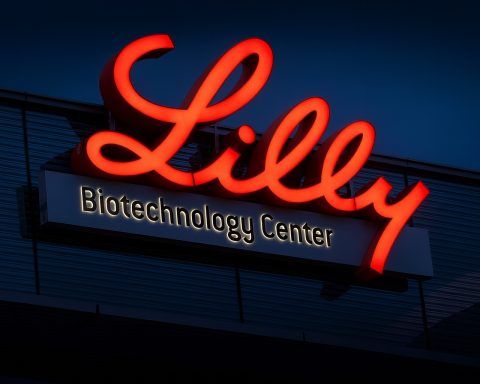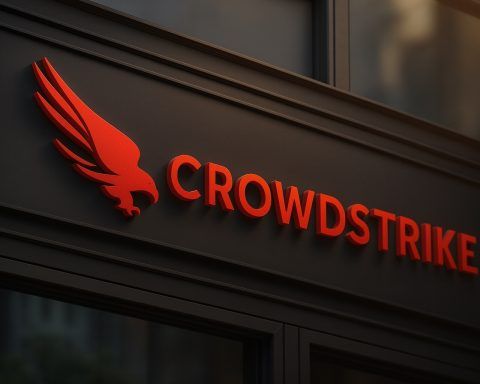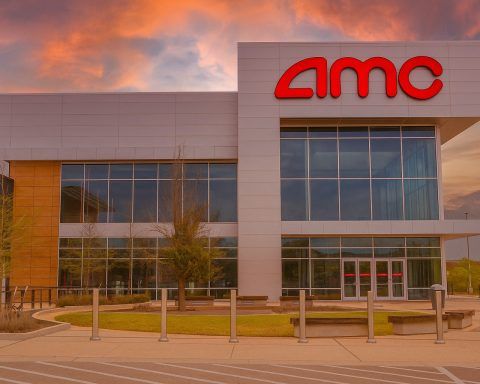Updated: November 15, 2025
Micron Technology’s stock (NASDAQ: MU) has quietly turned into one of 2025’s biggest AI winners. Shares closed Friday at $246.83, just below the recent all‑time high of $257.07, and up roughly 150%+ over the past year with the price having more than tripled in 2025 by many counts. [1]
Wall Street just pushed the narrative even further. Morgan Stanley has named Micron its new “Top Pick”, lifting its price target to $325 (with a bull‑case up to $420) on the back of a tightening memory market and surging AI demand. [2]
At the same time, Micron’s own numbers are exploding: fiscal 2025 revenue jumped 49% to $37.4 billion, data‑center sales reached 56% of total revenue, and HBM (high‑bandwidth memory) revenue alone hit nearly $2 billion in the latest quarter, implying an $8 billion annualized run rate. [3]
So is MU stock still a buyable AI memory play going into 2026, or are investors late to the supercycle? Below is a deep dive and scenario‑based forecast that’s designed to be both SEO‑friendly and Google News / Discover‑ready, while staying realistic about risks.
MU stock today: price, valuation and sentiment snapshot
As of the close on November 14, 2025:
- Share price: $246.83
- 52‑week range: $61.54 – $257.07
- Market cap: ≈ $277 billion, now firmly in mega‑cap territory
- 1‑year performance: ~150–180% gain, depending on the exact start date/window
- Dividend yield: ~0.2% (symbolic; this is a growth story, not an income stock) [4]
Trailing twelve‑month EPS is about $7.59, which puts Micron on a trailing P/E of ~32.5x at the current price. [5]
But the real story is forward earnings:
- Street EPS estimates for FY 2026 (Micron’s FY ends in August) cluster roughly in the $15–17 per share range. [6]
- Some more bullish models, including Morgan Stanley and select research houses, see $20+ EPS potential if DRAM and HBM pricing stays tight. [7]
At $246–247, that implies an approximate forward P/E in the mid‑teens—roughly 14–16x FY 2026 EPS, dropping toward 13x on FY 2027 estimates. By tech mega‑cap standards, that’s not cheap, but not bubble territory either given the growth trajectory.
Interestingly, the average 12‑month analyst price target still sits around $210, implying modest downside from today’s levels, even as the high end has jumped to $325 after Morgan Stanley’s revision. [8]
That spread tells you two things:
- The stock has run much faster than consensus models have been updated.
- The Street is divided on how sustainable the AI memory supercycle really is.
Fiscal 2025: Micron’s AI pivot shows up in the numbers
Micron just wrapped an exceptional fiscal 2025 (year ended late August):
- FY 2025 revenue:$37.4B, up 49% year over year
- Q4 FY 2025 revenue:$11.3B, up 22% quarter‑on‑quarter and 46% year‑on‑year
- FY 2025 non‑GAAP EPS:$8.29 vs. $1.30 a year earlier
- Q4 FY 2025 non‑GAAP EPS:$3.03, well above guidance and Street estimates [9]
By technology and segment, the transformation is even clearer:
- DRAM was 79% of Q4 revenue and 76% for the year, with DRAM revenue up 62% YoY.
- NAND (including SSD and UFS) contributed ~23% of FY revenue, up a more modest 18% YoY. [10]
- Data center now accounts for 56% of Micron’s total revenue with 52% gross margins, reflecting the mix shift toward HBM and advanced server DRAM. [11]
- HBM revenue reached almost $2 billion in Q4 alone, an ~$8B annualized run rate, with management saying they expect to sell out their HBM capacity for calendar 2026 in upcoming contracts. [12]
Margins are responding accordingly:
- Q4 FY 2025 non‑GAAP gross margin hit about 46%, up sharply from the mid‑30s a year ago.
- Operating margin reached ~35% and free cash flow turned strongly positive, with FY 2025 adjusted FCF of $3.7B and Q4 FCF of $803M, even after heavy capex. [13]
Micron also secured a $6.2 billion CHIPS Act subsidy to support its U.S. manufacturing build‑out—funding it does not expect to be changed despite discussions about restructuring CHIPS support at the federal level. [14]
Bottom line: Micron has already exited the downcycle and is now operating with:
- Record revenue,
- Rapidly expanding margins, and
- A product mix heavily skewed toward the AI data‑center stack.
Guidance: what Micron itself is signaling for early 2026
For fiscal Q1 2026 (the quarter now underway), Micron’s official guidance calls for: [15]
- Revenue:$12.5B ± $300M
- Non‑GAAP gross margin:51.5% ± 1 percentage point
- Non‑GAAP EPS:$3.75 ± $0.15
- Continued elevated capex (~$4.5B in Q1), primarily to fund advanced DRAM (1‑gamma) and HBM‑related capacity
If the company delivers anywhere near that trajectory, Micron is on pace for:
- >40% revenue growth again in FY 2026 (Street consensus is around $53–56B). [16]
- More than doubling earnings vs FY 2025, with many consensus datasets now showing mid‑teens to high‑teens EPS for FY 2026 and 2027. [17]
That’s the fundamental engine behind Wall Street’s aggressive target hikes.
November 2025 news: Morgan Stanley’s “Top Pick” call and the AI memory squeeze
The November 2025 news flow around Micron has been unusually dense and almost all focused on the same theme: AI‑driven memory shortage.
Key headlines:
- Morgan Stanley upgraded MU to a “Top Pick” and raised its price target from $220 to $325, citing a rare DRAM pricing spike and the potential for Micron’s EPS to move into “uncharted territory.” [18]
- The firm likened recent DDR5 price moves—tripling in about a month—to the dramatic memory cycles of the 1990s, but starting from a much higher earnings base. [19]
- Mizuho reiterated a bullish stance, targeting $265 and highlighting strong, multi‑year demand for HBM and DRAM tied to AI infrastructure. [20]
- A broader rally in memory and storage names (Micron, Western Digital, Seagate) earlier this week was driven by optimism that AI data‑center build‑out will continue to consume huge amounts of DRAM, HBM and NAND well into 2027 and beyond. [21]
One notable nuance: while top‑end price targets are leaping higher, the average Street target still trails the share price by roughly 10–15%. [22]
That reflects both:
- Lagging models (many analysts simply haven’t updated full 2027–2028 assumptions yet), and
- Honest caution about how long a commodity‑like business can sustain “AI supercycle” pricing before supply inevitably catches up.
Technology edge: HBM4 leadership and the AI server stack
Micron is no longer just a DRAM volume player; it’s positioning as a technology leader in HBM, the ultra‑fast stacked memory that sits directly alongside GPUs in AI servers.
Recent milestones:
- Micron has begun sampling its next‑generation HBM4, delivering up to ~2.8 TB/s bandwidth per stack and pin speeds above 11 Gbps, exceeding JEDEC HBM4 baseline specs and leapfrogging early roadmaps from Samsung and SK hynix. [23]
- The company is working with TSMC to co‑develop HBM4E, which will allow custom base logic dies for customers like Nvidia and AMD—a first in the HBM industry and a likely driver of higher margins and tighter customer lock‑in. [24]
- Micron’s HBM business alone is now at an ~$8B run rate and expected to grow again in FY 2026, with management indicating that 2026 HBM capacity is effectively sold out. [25]
Competition is catching up. In late September, Samsung finally secured Nvidia certification for its 12‑layer HBM3E, but most reports suggest the Korean giant won’t be shipping high volumes to Nvidia until 2026, leaving SK hynix and Micron as the primary HBM3E suppliers in the near term. [26]
That dynamic supports a tight supply / firm pricing environment for at least the next 12–18 months, particularly in AI accelerators where each GPU can use multiple stacks of HBM.
Beyond data centers: automotive and edge AI with UFS 4.1
Micron isn’t only leaning on data centers. On November 13, 2025, the company announced that it has begun shipping qualification samples of its automotive UFS 4.1 storage built on its 9th‑generation (G9) 3D NAND: [27]
- Delivers 4.2 GB/s bandwidth—2x the prior generation.
- Offers 30% faster device boot and 18% faster system boot vs UFS 3.1.
- Rated for up to 100,000 P/E cycles (SLC) with operation from −40°C to 115°C, and compliant with ASIL‑B (ISO 26262) automotive safety standards.
Strategically, that product matters because:
- It pushes Micron deeper into ADAS and autonomous driving, where rich sensor data and on‑board AI need both fast DRAM and robust NAND.
- It positions Micron as a key player in “AI at the edge”—cars, industrial systems, robotics—where growth is likely to compound on top of cloud AI demand over the next decade.
While the UFS 4.1 announcement is about qualification samples, not mass‑volume shipments, it reinforces Micron’s broader AI narrative beyond just hyperscale data centers.
Capacity, CHIPS Act, and the New York fab delay: risk or hidden support?
One notable November headline that didn’t get as much social‑media attention: reports that Micron’s planned New York “megafabs” in Clay may be delayed by 2–3 years, with neither facility likely to be online before late 2030. [28]
Combined with management’s own signaling that:
- 2025–2026 DRAM and NAND bit supply growth will stay below industry demand outside HBM, and
- Micron is keeping capex elevated but disciplined, emphasizing technology migration over raw wafer capacity, [29]
…the New York delays may actually prolong the tight supply backdrop—supportive for DRAM/HBM pricing, though obviously limiting longer‑term volume upside.
Risks here:
- If AI demand slows or shifts to more memory‑efficient architectures, Micron could find itself with underutilized capex later in the decade.
- Regulatory or political changes could tweak the $6.2B CHIPS subsidy structure, though Micron currently does not expect material changes. [30]
For the next few years, however, the balance of evidence points to supply remaining constrained, especially in leading‑edge DRAM and HBM.
MU stock forecast: base, bull and bear scenarios for 2026–2028
None of the following is financial advice; it’s a scenario framework, based on current public estimates and the November 2025 news flow.
1. Base‑case (probable, if AI spending stays strong but normalizes)
Assumptions:
- AI data‑center capex continues to grow, but at a less frantic pace after 2026.
- DRAM and HBM pricing stay firm in 2026, then level off as new capacity from Micron, Samsung and SK hynix starts to roll in 2027–2028. [31]
- Micron roughly delivers on consensus projections:
- FY 2026 EPS around $15–17
- FY 2027 EPS around $17–19
- Revenue climbs toward $55–63B over that span [32]
If the market values Micron at 16x FY 2026 EPS and 14–15x FY 2027, that would roughly imply:
- Late‑2026 fair value: ~$260–270 per share
- Late‑2027 fair value: ~$250–285 per share (modest multiple compression as the cycle matures)
From today’s ~$247 level, that suggests mid‑single‑digit to low‑double‑digit annual returns, plus a tiny dividend, in a base case where the AI memory boom evolves into a strong but more “normal” growth story.
2. Bull‑case (supercycle persists, Morgan Stanley roughly right)
Assumptions:
- DRAM and HBM pricing stay tight through at least 2027, with blended memory prices up 15–20% into early 2026 and some late‑contract buyers facing 50%+ increases, as Morgan Stanley projects. [33]
- Hyperscalers, AI cloud providers and big tech maintain aggressive AI build‑outs, and on‑device / automotive AI ramps faster than currently modeled. [34]
- Micron executes on its HBM4/HBM4E roadmap, maintains a technology edge, and continues to sign high‑margin, long‑term supply agreements. [35]
- EPS overshoots consensus and trends toward the $20+ range in 2027–2028.
Under that setup:
- A 20x multiple on $20 EPS would suggest $400 as a plausible 3‑year bull‑case target.
- That lines up broadly with Morgan Stanley’s $325 base‑case and $420 bull‑case framework. [36]
From today’s price, that implies ~30–60% potential upside over 2–3 years, but with high volatility and the constant risk that the cycle cracks sooner than expected.
3. Bear‑case (classic memory bust returns)
Assumptions:
- AI demand disappoints or shifts to architectures that sharply reduce memory intensity.
- Competitors—especially Samsung and SK hynix—bring on capacity faster than expected, leading to oversupply in DRAM/HBM by 2027–2028. [37]
- Pricing rolls over, gross margins compress, and EPS falls back into the single‑digits for a period.
In that world, the market could easily compress Micron back to:
- 10–12x “through‑cycle” EPS, say on $10–12 of earnings power, implying a stock in the $100–140 range.
That would be a substantial drawdown from current levels, even if that kind of reset might later set up the next cycle.
Key risks to watch
Regardless of which scenario you lean toward, serious MU investors should keep an eye on:
- DRAM and HBM spot and contract pricing
- Rapid price spikes are great… until they signal demand destruction. Watch how pricing behaves into late 2026.
- Competitor roadmaps (Samsung, SK hynix, Chinese entrants)
- Samsung’s recent Nvidia HBM3E certification proves Micron’s lead isn’t unassailable, even if Samsung’s volume ramp will take time. [38]
- AI spending patterns from hyperscalers and major cloud providers
- If AI workloads shift toward memory‑efficient model architectures or demand cycles around political / macro shocks, memory intensity may moderate.
- Execution on U.S. fab projects and CHIPS Act incentives
- Delays in New York and timelines for high‑volume production in Idaho and Virginia could affect mid‑to‑late‑decade supply—and therefore the sustainability of today’s elevated pricing. [39]
- Macro and semiconductor cycle risk
- Memory has historically been one of the most cyclical corners of semis. Even with AI, there’s no guarantee this time is “different” forever.
Takeaway: Is it “too late” for MU stock?
At ~$247 per share, MU is no longer the deep value play it was when the cycle bottomed, but it also doesn’t look like a classic late‑stage bubble:
- Forward valuation (~14–16x EPS) is reasonable for a company whose revenue and earnings could still grow double‑digits annually for several years if AI and HBM trends hold. [40]
- The technology and product mix story—HBM4 leadership, data‑center dominance, and expansion into automotive / edge AI—supports a multi‑year structural growth thesis, not just a one‑quarter pop. [41]
- On the other hand, the stock has already discounted a lot of good news, and memory has never been a straight line.
For long‑term, high‑risk‑tolerant investors who believe:
- AI infrastructure spending will stay elevated through 2028+, and
- Micron will maintain a top‑tier position in HBM and advanced DRAM,
MU still looks like a credible core AI‑hardware play with meaningful upside in a bull‑case and a non‑trivial drawdown risk if the memory cycle turns.
As always, this article is informational only, not investment advice. Anyone considering MU should weigh their own risk tolerance, time horizon, and portfolio concentration before making decisions.
References
1. www.investing.com, 2. www.investopedia.com, 3. investors.micron.com, 4. www.investing.com, 5. www.investing.com, 6. www.zacks.com, 7. www.marketwatch.com, 8. www.marketbeat.com, 9. investors.micron.com, 10. investors.micron.com, 11. investors.micron.com, 12. www.reuters.com, 13. investors.micron.com, 14. www.reuters.com, 15. investors.micron.com, 16. beth-kindig.medium.com, 17. www.zacks.com, 18. www.investors.com, 19. www.marketwatch.com, 20. www.investopedia.com, 21. www.investopedia.com, 22. www.marketbeat.com, 23. www.techradar.com, 24. www.reuters.com, 25. www.reuters.com, 26. www.tomshardware.com, 27. investors.micron.com, 28. www.trendforce.com, 29. investors.micron.com, 30. www.reuters.com, 31. www.tomshardware.com, 32. www.zacks.com, 33. www.marketwatch.com, 34. www.investopedia.com, 35. www.techradar.com, 36. www.marketwatch.com, 37. www.tomshardware.com, 38. www.tomshardware.com, 39. www.trendforce.com, 40. stockanalysis.com, 41. investors.micron.com










